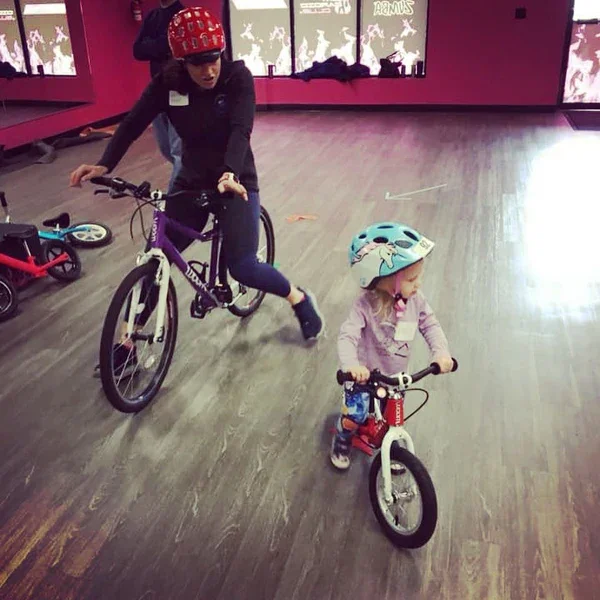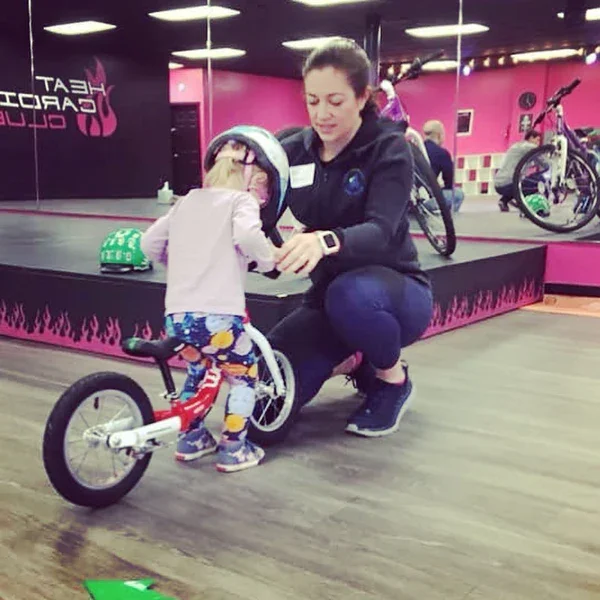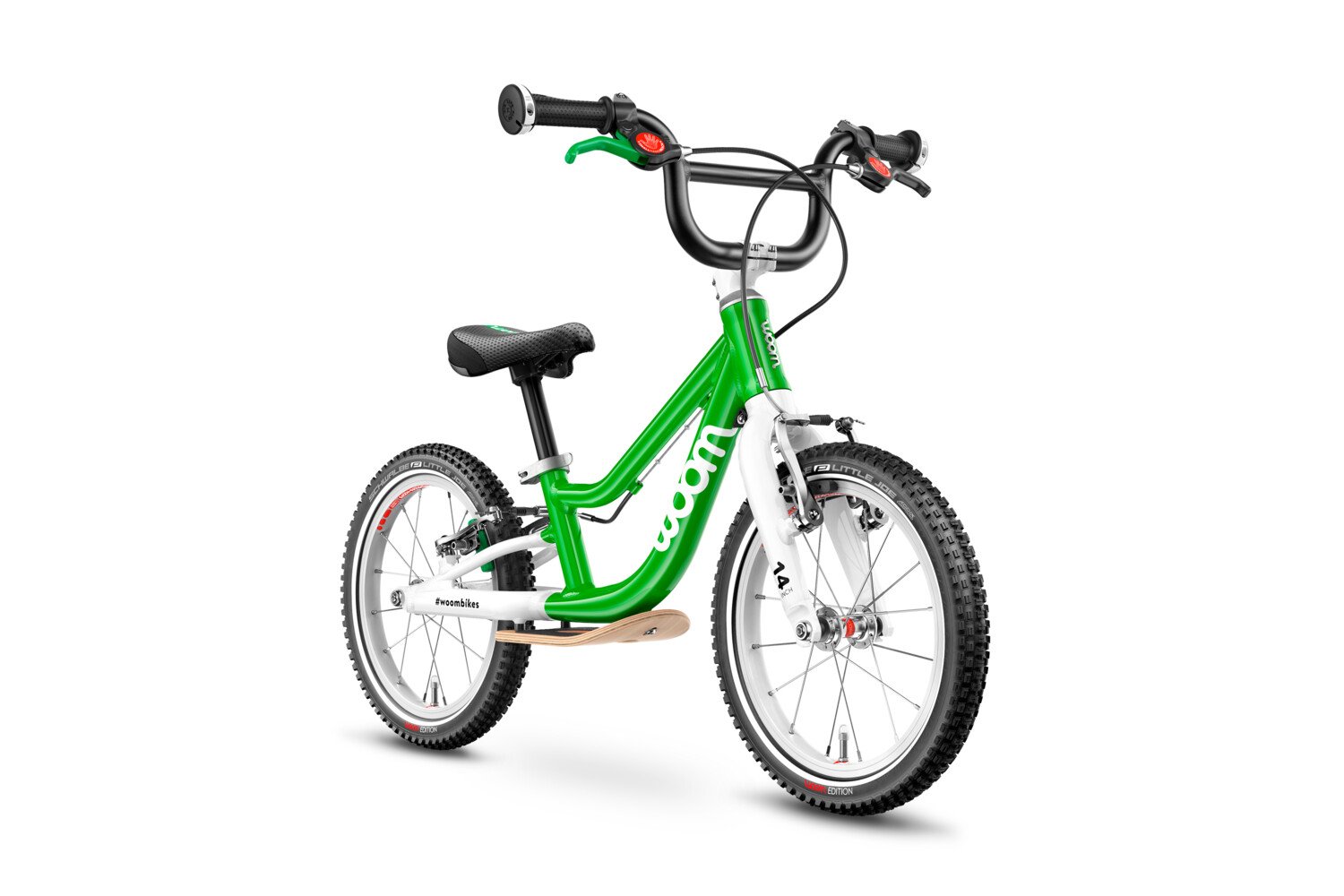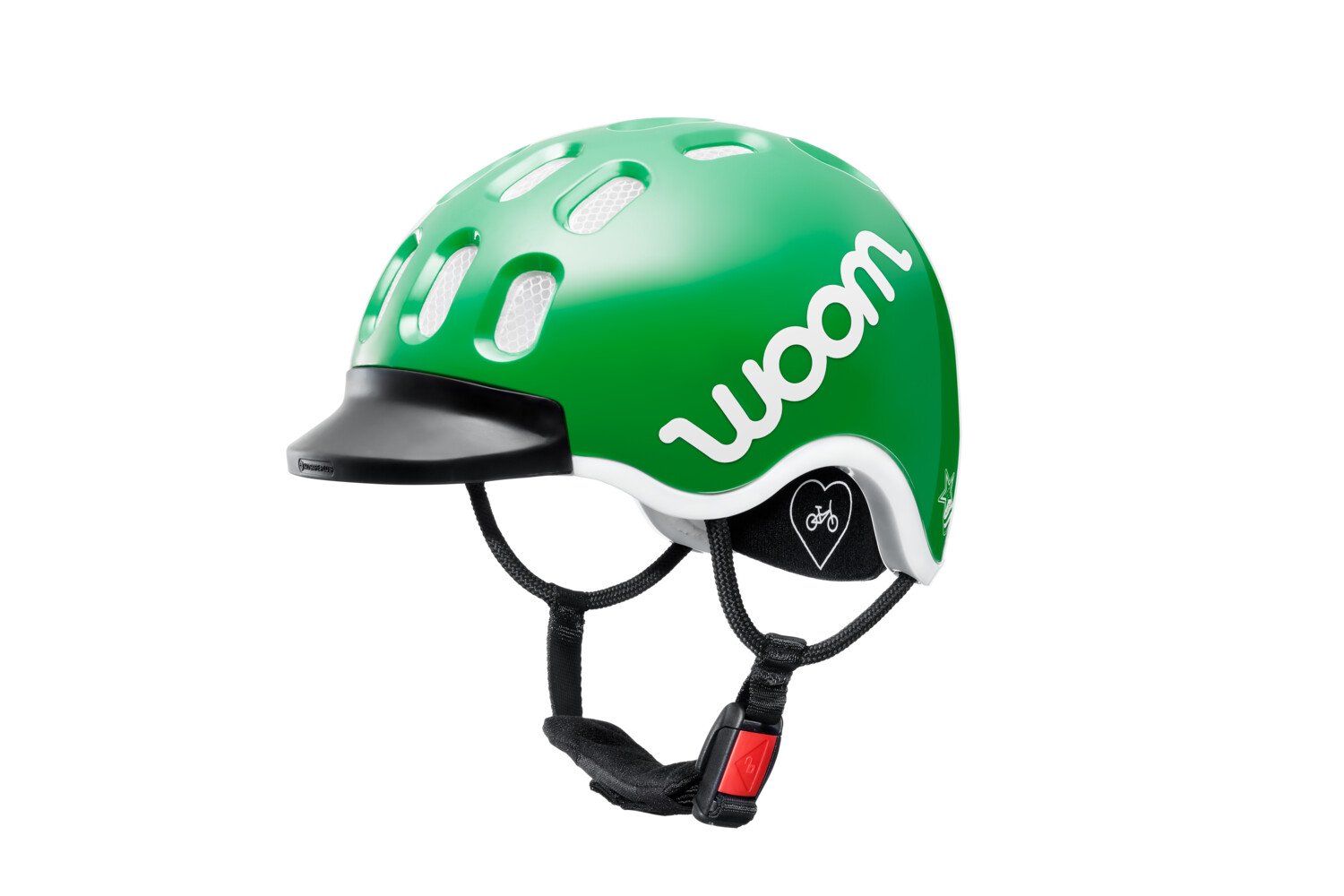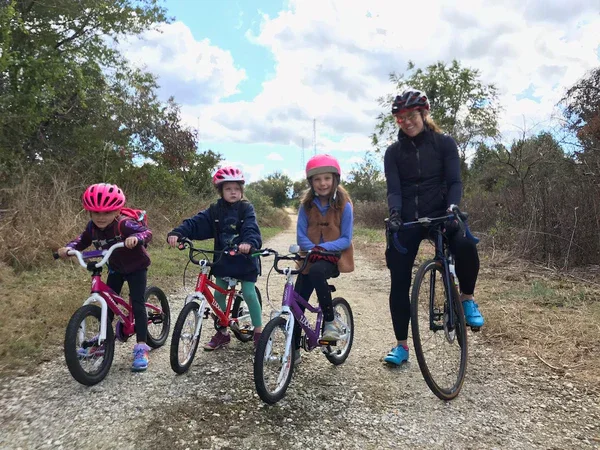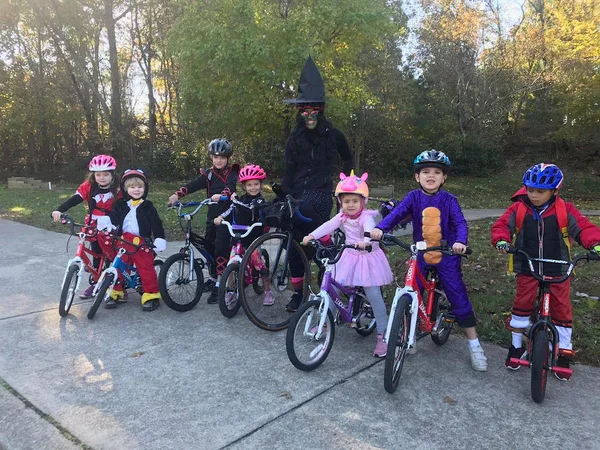Getting Started on the Balance Bike
Tips from PedalPowerKids
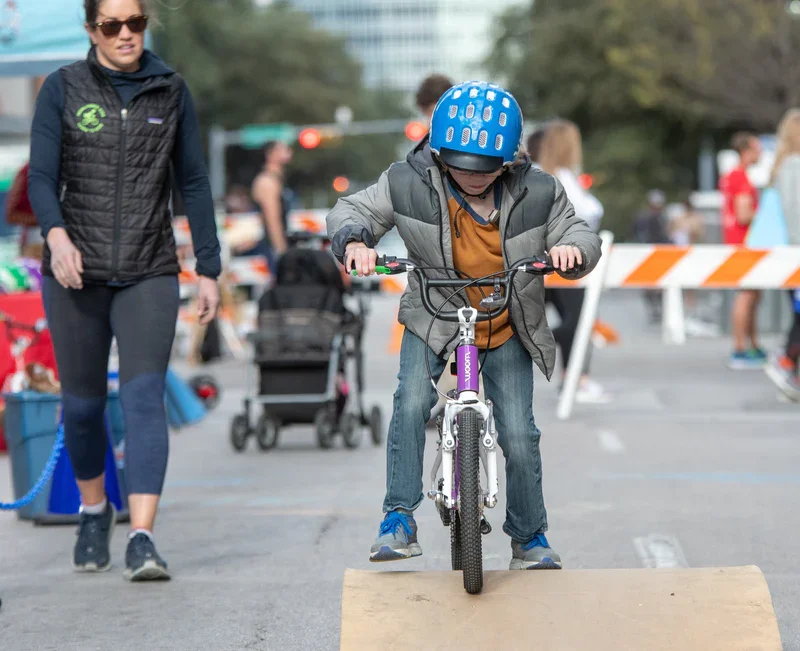
woom bikes USA has proudly partnered with PedalPower Kids in Annapolis, Maryland, since 2017. PedalPower Kids founder Rachel Varn, who has four children in her household from ages 8 to 19, is a mom and former competitive IRONMAN triathlete; she also brings previous experience working in the bike industry and coaching kids in sports like track, field hockey, and swimming to her current full-time career of teaching kids to ride.
In her programs, Varn uses a fleet of 10 woom bikes—each has a distinct personality and name, typically inspired by its color. Varn laughs, saying she’ll often hear, “I can’t wait till I get to ride Dory again!” or “I’ll go faster if I get to ride Cheetah!”
Varn’s minivan is specially outfitted to carry the bikes, transporting the joy of riding all around town to PedalPower Kids’ on-location private or group lessons, bike clubs, bike rodeos, and bike-intensive summer camps.
Since every day for Varn is wheels-on-the-ground, we decided to ask for her expertise on how to get started from square one: balance bikes!
Why to Choose Balance Bikes
Varn doesn’t incorporate training wheels in her lessons, sharing woom’s philosophy that training wheels teach all the wrong things and actually make it harder for a child to learn to ride.
Varn notes that balance bikes have grown increasingly popular; now many of her classes are geared toward very young riders, but when she first started her business, she primarily taught private lessons to older kids who were struggling with the leap from training wheels to first pedal bike.
When teaching older children to ride, Varn incorporates many of the core concepts of balance bikes—for example, at the beginning of a session children will start with the pedals off to learn balancing first, or they might ride a bike that’s a size too small for the first day or two so that they can always put their feet on the ground comfortably while learning (then once they’ve got skills down like turning by leaning and using their body to steer the bike, they quickly transition to the bigger bike that’s correctly sized).
“Balance bikes allow riders a high degree of control over their movement and experience on the bike,” Varn says. “Young riders quickly pick up on the ‘cause and effect’ of moving their bodies a certain way, and as a result, develop a great deal of confidence in their own abilities and in the bike’s response. When young riders feel confident in their abilities and trust their bike, they can begin to experiment with speed, obstacles, and increasingly challenging skills.”
Day 1 Isn’t Always Easy
“A lot of parents have the expectation that their children are going to get on a balance bike and start gliding,” Varn says, but she explains that every child is different, and there’s no reason to give up if a rider isn’t flying down ramps on day 1. A slower-than-expected start doesn’t mean that the balance bike wasn’t a success, or that the rider isn’t learning important skills.
PedalPower Kids’ balance bike curriculum integrates music and games. Varn says the idea is to get kids excited about riding and to develop their trust and comfort. The key, she explains, is that a child should get to know the balance bike at his or her own pace. Maybe your child isn’t gliding, but maybe she’s getting on the bike independently or walking with it—cheer on these small successes, too, and watch as her confidence grows!
Not All Balance Bikes Are Created Equal
“Coming from the bike industry, I know the bike is a big part of the equation,” Varn says. “The geometry of bikes out there, the quality of bikes out there…sometimes bikes are very poorly or cheaply designed, and the wrong bike can be a detriment to learning.”
Varn continues, “I knew early on that PedalPower Kids would work with great bikes, because I knew that it would facilitate the learning process and make it easier, and make kids feel more excited about riding.”
“As soon as I started putting kids on woom bikes, they felt so much more confident,” she says.
A lightweight woom bike allows kids to maneuver more easily and navigate varied terrain with less effort and less spills, she explains. woom's balance bikes—the woom 1 and woom 1 PLUS (shown above) —feature small-hands reach hand brakes, which allow riders to learn braking at a very early stage.
Varn also points out that woom’s design allows easy on and off for even the tiniest riders—a more challenging feat than it might seem. “Often, little ones topple over just trying to get on or off the bike, and then refuse to try again. woom’s frame shape and light weight make for a smooth mount and dismount.”
Varn appreciates woom’s focus on safety and says she’s a big fan of woom’s helmets, which she uses for all her classes.
“Every time I do a bike rodeo or clinic or group class, I appreciate how thoughtful the design is,” she says. “With a lot of helmet brands, I think user error is very high because the design is not ergonomic. Kids are wearing it wrong because they are uncomfortable.”
She jokes that 90 percent of kids try to take the program’s woom helmets home with them after class—leaving the lessons with them because they’re so comfortable they don’t realize they’re still wearing them on their heads. “Which is a good thing,” Varn says. “You want kids using equipment they’re comfortable with.”
Building a Future of Loving to Ride
A bike represents independence for a child, the joy of being active and outside. These are things that will serve them well far in the future.
Varn says she feels very fortunate to be a part of the experience. “Getting to see kids really believe in themselves and feel really good about themselves…it’s truly just a really special thing to witness,” Varn says. “I’ll come home and tell my family about my day with tears in my eyes.”
Varn says one of the most rewarding things about what she does is seeing families get outside and ride together. She says after a child learns to ride sometimes she’ll get a text later from the child’s mom saying, “What bike should I get?”
More Ways to Encourage & Motivate
- Allow riding inside the house on wood, vinyl, tile, etc, surfaces for added fun and practice, especially in the winter.
- Turn ride time into a playdate with friends who are balance bikes too; a buddy can be all the boost a reluctant rider needs. Sometimes mom and dad on a bike works just as well!
- Think of creative games to make rides fun. Sidewalk chalk or a set of training cones can be the building blocks of the perfect obstacle course.
- When teaching new skills, repeat simple phrases. A favorite for Varn’s students learning to ride pedal bikes is “Just keep pedaling!”, inspired by Dory’s catchphrase in Finding Nemo. For balance bikes, she uses “Superglue your bum to the seat!,” which always inspires a giggle or two. (Varn says on a balance bike seat height should be adjusted so that the child’s feet are flat on the ground with a slight bend to the knee; they should be able to sit comfortably on the seat throughout the “running” motion and also have enough leverage to push their feet off the ground.)
For more tips and ideas, check out Varn’s post Balance Bike Basics on PedalPowerKids.com.
